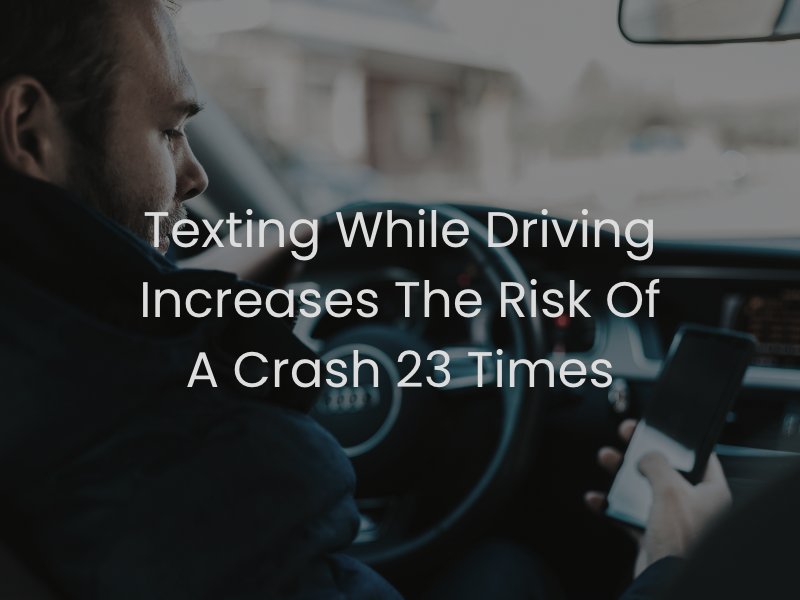In today’s fast-paced world, smartphones have become an essential part of daily life. From checking emails to scrolling social media, people rely on their devices for nearly everything. However, this dependence becomes incredibly dangerous when drivers use smartphones behind the wheel. Distracted driving, particularly due to smartphone use, is a leading cause of accidents, injuries, and fatalities on the road. Despite laws and awareness campaigns, many drivers still underestimate the risks of using a phone while driving. This article explores why smartphones are so dangerous to drivers and why it’s crucial to break this habit.
If you were involved in a collision due to someone else being distracted by their phone, contact a car accident lawyer in Laredo today to get legal assistance while you focus on your recovery.
The Three Types of Distracted Driving
Distracted driving can be categorized into three main types:
- Visual Distractions – Anything that takes a driver’s eyes off the road. Reading a text, watching a video, or looking at a GPS app falls into this category.
- Manual Distractions – Any action that requires a driver to remove their hands from the wheel. This includes typing on a phone, dialing a number, or even holding the device.
- Cognitive Distractions – Anything that diverts a driver’s mental focus from driving. Engaging in a phone conversation or composing a text message can significantly impair a driver’s reaction time.
Smartphone use while driving is especially dangerous because it often involves all three types of distractions at once. Looking at the screen, typing a message, and thinking about a conversation create a deadly combination that greatly increases the risk of a crash.
How Smartphones Affect Reaction Time
Studies have shown that using a smartphone while driving is equivalent to driving with a blood alcohol content (BAC) of 0.08%, the legal limit for intoxication in most states. A driver who is texting takes their eyes off the road for an average of 5 seconds. At 55 mph, that’s the equivalent of driving the length of a football field without looking.
Reaction time is crucial in avoiding accidents. If a pedestrian suddenly crosses the street or the car in front brakes unexpectedly, a distracted driver may not react in time to prevent a collision. Research from the National Highway Traffic Safety Administration (NHTSA) has shown that texting while driving increases the risk of a crash 23 times compared to driving without distractions.
The Illusion of Multitasking
Many drivers believe they can safely multitask by glancing at their phone while still paying attention to the road. However, studies have proven that the human brain does not truly multitask—it simply switches focus rapidly between tasks. When a driver looks at their phone, even for a moment, their brain takes time to refocus on driving. This “attention shift” leads to slower reaction times and poor decision-making.
Even hands-free devices do not eliminate the danger. Talking on a phone, whether handheld or Bluetooth-enabled, still causes cognitive distraction, making drivers less aware of their surroundings. In fact, hands-free phone use has been linked to reduced situational awareness, increasing the likelihood of missing stop signs, red lights, and sudden obstacles.
The Rise of Social Media and Live Streaming While Driving
In recent years, a disturbing trend has emerged: drivers using social media apps and live-streaming while behind the wheel. Platforms like TikTok, Instagram, and Snapchat encourage real-time interaction, tempting drivers to engage with their audience while driving. Some have even recorded crashes as they happened, highlighting the devastating consequences of this reckless behavior.
Apps designed to encourage interaction create an addictive loop that makes it difficult for drivers to resist checking notifications. This addiction increases smartphone-related crashes, as drivers prioritize virtual engagement over real-world safety.
Legal Consequences of Smartphone Use While Driving
Many states have enacted strict laws to combat distracted driving. In most places, texting while driving is illegal, and some states have banned all handheld phone use. Penalties range from fines to license suspensions, and in cases where distracted driving leads to injury or death, drivers can face criminal charges.
Despite these laws, enforcement remains a challenge. Many drivers believe they can use their phones discreetly, but police officers and traffic cameras are becoming more adept at catching offenders. Additionally, if an accident occurs, phone records can be used as evidence to prove distracted driving, leading to liability lawsuits and higher insurance premiums.
Preventing Smartphone Distractions While Driving
Breaking the habit of using a smartphone while driving requires conscious effort. Here are some effective strategies to stay focused on the road:
- Use “Do Not Disturb” Mode – Most smartphones have a setting that silences notifications while driving. Activating this feature can reduce the temptation to check messages.
- Put Your Phone Out of Reach – Keeping your phone in the glove compartment or backseat can make it harder to use while driving.
- Enable Auto-Reply Texts – Many devices allow users to set up auto-reply messages that inform contacts they are driving and will respond later.
- Rely on a Passenger for Assistance – If navigation or calls are necessary, ask a passenger to handle the phone while you focus on the road.
- Hold Yourself Accountable – Set personal rules about phone use in the car and encourage friends and family to do the same.
Be Safe, Put The Phone Down!
Smartphones have revolutionized the way we communicate, but they have no place behind the wheel. The combination of visual, manual, and cognitive distractions makes smartphone use one of the deadliest driving habits. No text, notification, or call is worth a life. By recognizing the dangers and taking proactive steps to prevent distraction, drivers can help make the roads safer for everyone.
It’s time to put the phone down and focus on what truly matters—arriving safely at your destination.


Recent Comments